Your Cart is Empty
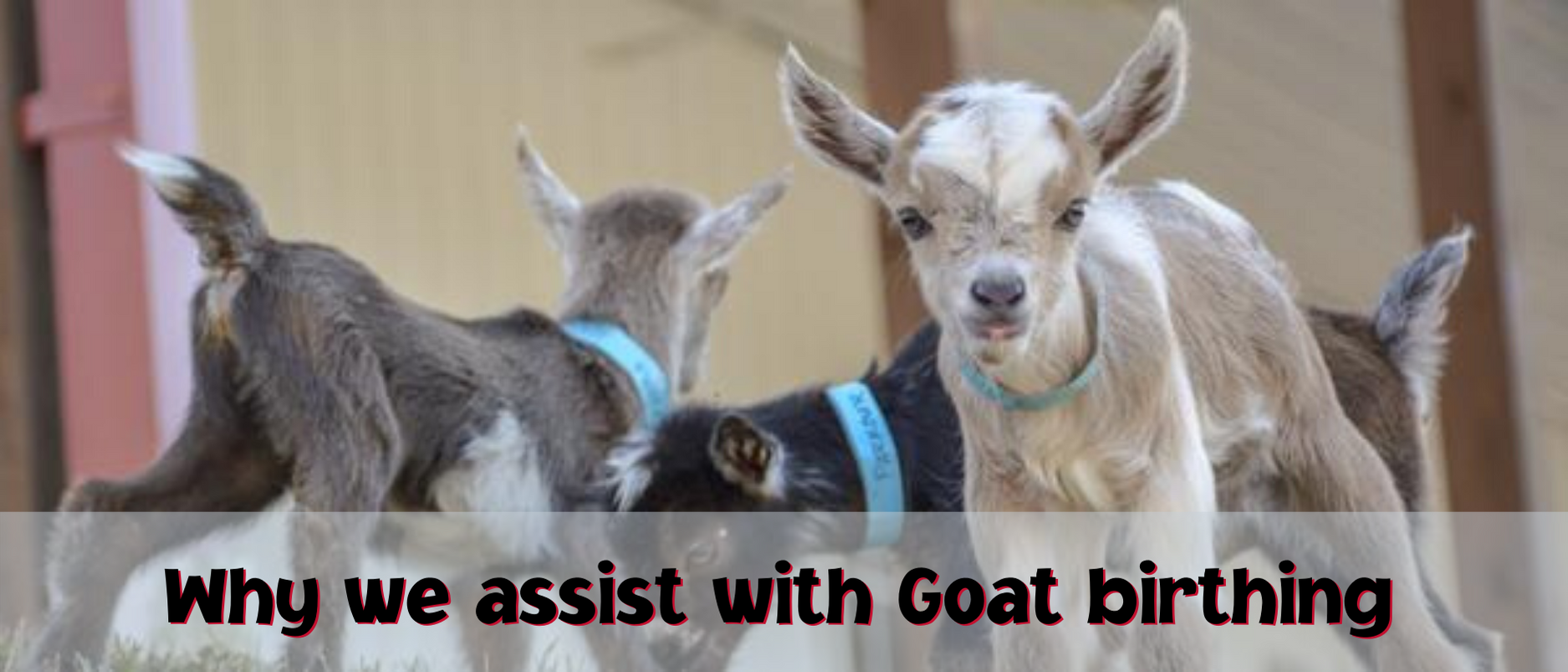
February 01, 2019
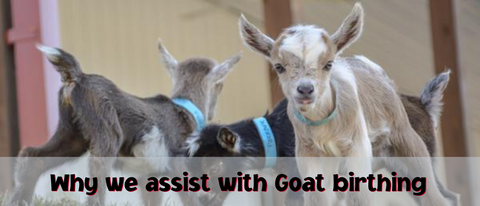
Knowledge is very important to me. It's one of the initial reasons I chose to homeschool my children - because I wanted them to gain knowledge and I thought that was better done in a home environment where their individual intellects could be encouraged.
I've realized that I don't want to just educate my own children. I want to share my knowledge with others because I have learned a lot over the years. It's one of the reasons I blog and podcast.
When it comes to the goats, we made the decision in 2017 to Facebook Live the goat births and deliveries. This wasn't an easy decision because whenever you share what you are doing in your life, it opens it up for the world to criticize. But we decided it was worth it because we wanted to share the miracle of baby goat births. But we also wanted to educate others. My children take for granted the fact that they are exposed to as much knowledge as they are. They have trouble comprehending that there are so many people out there who have never witnessed the birth of an animal. So we Facebook Live the births for these people.
But there is a second group that we Facebook Live the videos for - and that is goat owners and people who would like to someday own goats.
I remember my first kidding experience and how nerve-wracking it was because while I had read about it, I had never witnessed it. Fortunately for the goat (and me), everything went very smoothly and Sassy delivered a healthy doeling and buckling with no assistance from us. "HA! How amazing is the wonder of natural birth! Why was I worried? This is easy-peasy!" I thought.
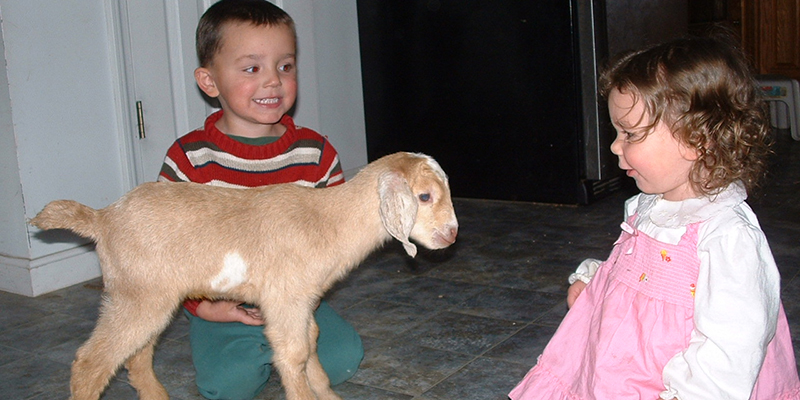
But four weeks later, Melody went into labor and it did not go well. She delivered a buckling pretty easily. But then she started pushing and pushing and pushing. And nothing came out.
I washed up and went in to see if I could figure out what the problem was.
I felt a leg and then another leg. And nothing in between. There was no head. Now, when I say there was no head, I don't mean the baby goat didn't have a head. I mean I couldn't locate the head. But there was also no butt. I was totally confused. I felt around as best as I could and still felt nothing but two legs.
Meanwhile, Melody is still pushing and pushing and pushing.
So Jim went in and found the exact same thing.
Melody is still pushing and pushing and pushing. The baby is alive at this point because he keeps moving his legs.
My Mom was there and she even went in and couldn't locate the head (my mom is not a farm gal, so this was a big sacrifice for her). In case you don't realize, there is no way Melody could deliver the goat like this unless we found the head and moved it into position.
By this time about an hour had passed and we were really starting to panic. Melody was in a lot of pain and we couldn't deliver this kid and she kept pushing and pushing and pushing.
We started calling vets, but of course, it was a Sunday and nobody would come out. We called other goat people we knew and two of them came out. They each tried to find the head and couldn't locate it or deliver the kid.
Now two hours had passed. Melody was still pushing, but she was clearly getting weaker.
Another farmer came out. Then another. Neither could locate the head or deliver the kid. (And just so you know, yes, we did try pushing the legs back to give us more room to work, but with all that pushing, Melody was very swollen.)
Three hours. No vet. Melody was weak, but still strong enough to push.
At around the four hour mark, we were still calling every vet we could, but we started talking about if we had to put Melody down to put her out of her misery, how we would do it. By this point, there is no movement whatsoever from the kid. We sent the children into the house when we started talking about putting her down.
I would like to remind you that we had owned goats for a total of about 3 months at this point. But with the people we called in, we calculated there were over 100 years of goat experience in the barn. And none of us was able to deliver the kid.
Closing on five hours, we finally located a vet an hour away who was willing to come out. She arrived at about six hours past when this ordeal began. Melody was still contracting, but mostly she was just lying on my lap, completely exhausted.
The vet goes in up to her shoulder to locate the head. It turns out the kid's neck is stretched out over its back and the head is then turned away. She pinched hard between the eyes to get enough leverage to work the head around into the proper position. It took her about 20 minutes of very strenuous effort, in up to her shoulder.
Melody and the vet deliver a dead kid.
At this point, none of us were surprised the kid was dead, but it was still devastating. It was a boy. The older children (we let them come back to the barn when the vet arrived) were crying. I was crying.
I then spent the next forty-five minutes grilling the vet with questions on what we should have done differently. She answered all of my questions and gave me a lot of advice while she worked on Melody (who survived her ordeal and went on to have more kids in subsequent years). She said that this was the hardest delivery she'd ever dealt with that did not end in a c-section.
That conversation with the vet and what I learned changed my outlook on goat birthing completely. I always thought that goat birthing was a natural process, and I just needed to be there to wonder at the miracle of birth and tell the momma goat she was doing a great job. But the experience we had just gone through and the vet's wisdom proved to me that complications in goat birthing are fairly common. The vet confirmed that had I been proactive, I could have saved that kid.
Following the vet's advice and the experience we have gained over the years, this is what we now do for every birth.
When a doe starts laboring, we glove up and check to see how dilated she is. Once she's mostly dilated we check the position of the kid. We check the position BEFORE the doe has pushed the kid into the birth canal. If the kid is in the proper presentation, we back off.
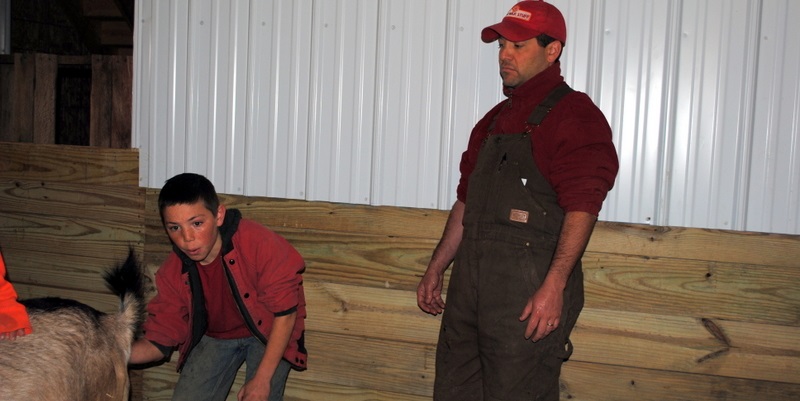
If the kid is not in the proper presentation, we work to reposition the kid before it is in the birth canal. Once the kid has been pushed into the birth canal, it is a lot harder on the kid and on the mom to reposition. This was our mistake with Melody. We realized there was a problem too late. The kid was already jammed pretty far into the birth canal. If the mom is pushing and can't deliver the kid, every push causes swelling which makes it more difficult for everyone. If you reposition before the kid is in the birth canal, you've increased your chances for a successful delivery.
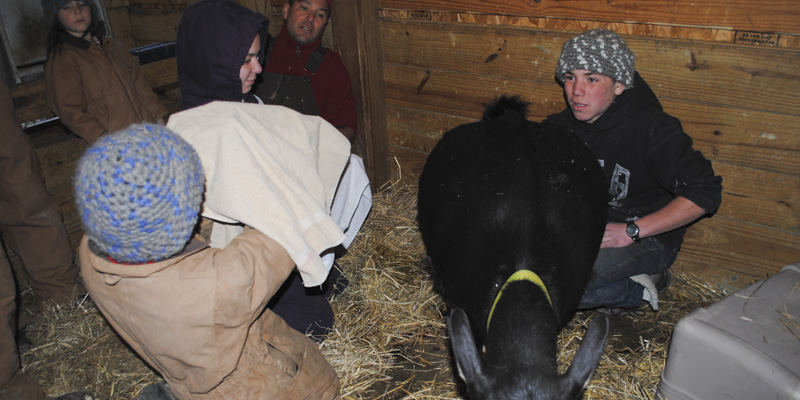
Once the kid is properly positioned and in the birth canal, we grab the legs and assist the mom with downward pressure on the legs every time she pushes. This assistance isn't always necessary, but we have found that by helping the mom, we are conserving her strength so that if she has another kid that's all tangled up, she has plenty of energy to push when the time comes. This is especially important if the last kid is breech. When delivering a breach, you run the risk of the umbilical cord breaking before the kid's head is delivered. As long as it is a quick delivery, the kid will be fine. But you don't want the mom's contractions to be sluggish because she's worn out, which could result in her delivering the breech kid too slowly. If that happened, the baby would suffocate in the birth canal.
It is important to state that you should never try to intentionally pop the bubble unless you have a specific reason. Leave the sac intact until it breaks on its own. The exception to this would be if you have a kid that is too large and the mom is having trouble delivering a properly presented kid. If she has been pushing for a while without much progress and you feel you need to help her, and the bubble is already outside, you can pop it to get a better grasp on the legs. You do not need to pop the bubble to try to get the kid to breathe. That is not necessary as long as the umbilical cord is still attached.
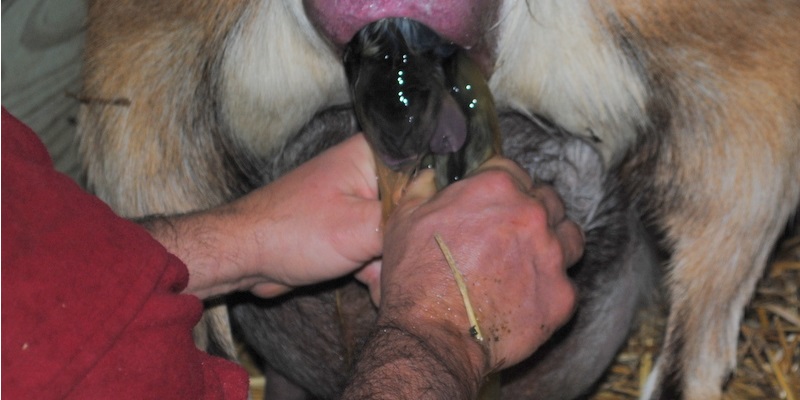
It is important that you are sure that there are no kids left in the uterus. If there is a live kid left, it will make its presence known pretty easily. But if there is a deceased kid left in the uterus, it may not be delivered without assistance. If you miss a dead kid and the cervix closes, you have a problem. Several years ago, we had three goats in labor at the same time. I don't remember the name of the two, but Myna Bird was the third. Myna delivered twin bucklings very easily and so we focused on helping the other two moms, one of whom had tangled kids.
Several hours later, Myna was acting very strange - head down, kinda lethargic. I asked Jim to go in and check and sure enough, there was a dead triplet buckling. Myna wasn't contracting, but fortunately, her cervix was still dilated so we gave her oxytocin to get the contractions started. (Important! - NEVER pull a kid out without the mother contracting. You will really hurt the mom. And never give oxytocin with a closed cervix.) It was after our experience with Myna, that we began routine checks to make sure we didn't feel any kids left after we thought all the goats were delivered.
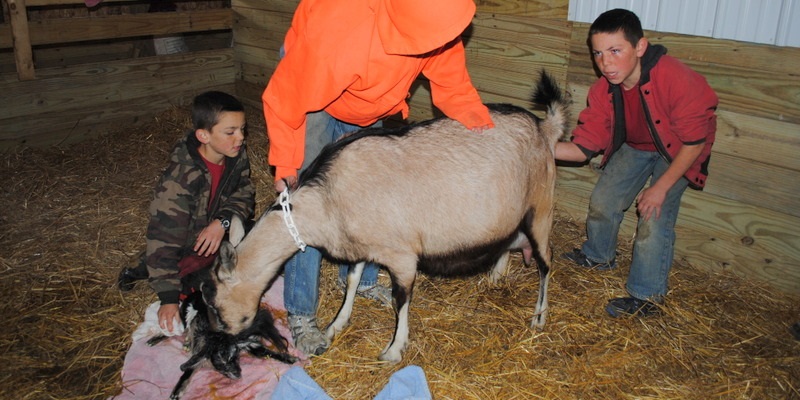
Please understand that these techniques and tips have been developed over years of goat deliveries and are highly effective, but may not translate very well through text and photos over the internet to your farm. If what you end up doing with your goats doesn't work out like it does for us, don't sue us. We're not veterinarians and none of what we are sharing should be taken as medical advice. As always, consult with your veterinarian if you have questions or problems. That being said, we have found that these methods are gentle, humane, and result in quick and comfortable recovery for does and kids alike, so I hope you can follow our example successfully!
When we post the Facebook Live videos, most people who watch are wonderful. Unfortunately, we regularly have some unkind people who come on and tell us that by "interfering" we are abusing our animals and we need to stop what we are doing immediately. If you ever watch one of our deliveries on Facebook Live and don't understand (or don't like) what you're seeing, please ask us instead of accusing us. We'll be happy to explain and to educate.
I'd just like everyone to understand that we love our goats. We love our goats more than anybody who is watching a Facebook Live video does. We want what is best for them. We know their history and we know when they need help and when they don't. We have the blessings of our vet in how we deliver and he is amazed at our high successful live birth rate and our low rate of postpartum problems with our moms.
You don't have to agree with us. You may believe all deliveries should be unassisted. You may be a goat owner and have had different experiences. I pray nobody EVER has to live through an experience like we did with Melody. But we've delivered over 500 baby goats and we've experienced more births than the average goat owner. So even if you disagree, please do us the honor of acknowledging that we are doing what we feel is best for the health of our animals whom we love and are responsible for.
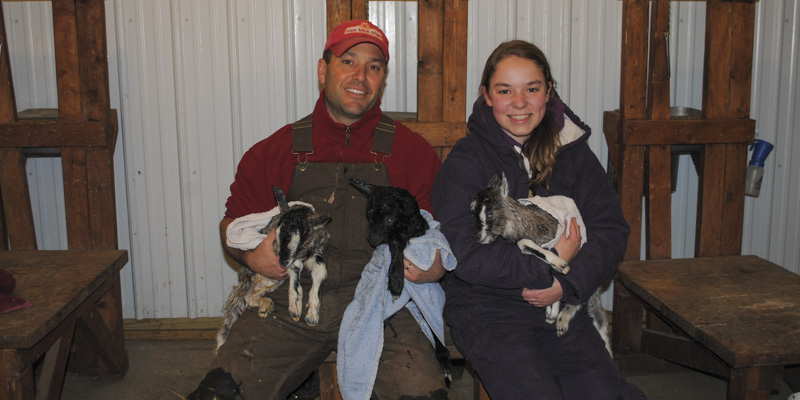
Thank you for your consideration, for joining us on Facebook Live, and for sharing our content so more people can learn and enjoy. Healthy baby goats make the world a better place, don't you think?
Disclaimer: This information is provided as an example of how we personally raise goats at Goat Milk Stuff. We are not veterinarians and any information on the GMS website should not be taken as veterinary advice. Please seek the advice of a professional vet before making any changes to your herd management or individual treatment of your goat
Comments will be approved before showing up.
Almost Heaven Homestead
February 08, 2022
Very informative article. 2022 will be only my 2nd kidding season, and although I’m not as nervous and scared as last year, there is still that fear. Luckily, last year everything went great. 2 does delivered 3 bucklings and 1 doeling. You have shared some things I’ve not heard before. Thanks for the great advice. Also, kuddos on your ending. People don’t have to agree with the way you do things. It works for y’all, you have healthy baby goats, and in the end, isn’t that all that matters??